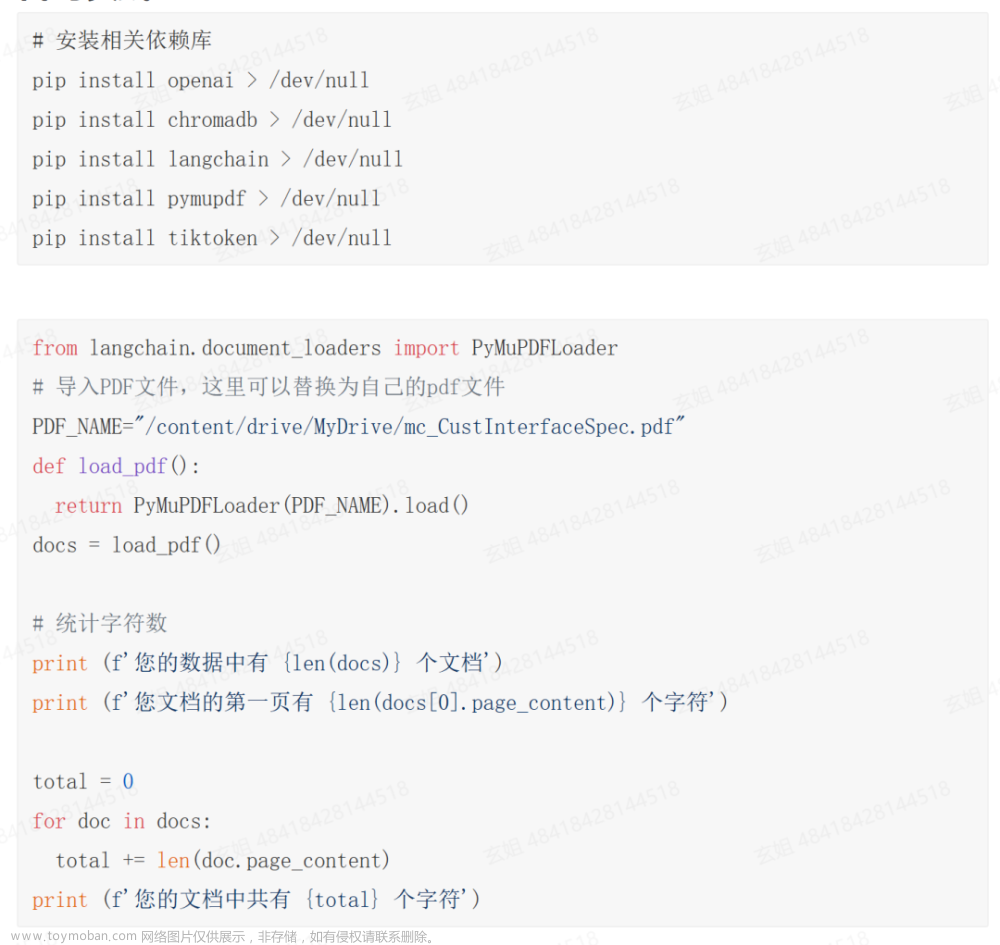生成语言模型由于生成不可控,所以生成的自然语言是非结构话的文本。而prompt的出现使得用户可以将期望的输出文本格式进行约束和规范。LangChain中的output parsers模块可以使模型输出的期望的结构化文本,使用的正是prompt操作。
LangChain中的output parsers一共有七个,分别是List parser、Datetime parser、Enum parser、Pydantic (JSON) parser、Structured output parser、Retry parser、Auto-fixing parser。前四种parser用于常见的格式输出转换,Structured output parser用于多字段输出时使用,最后的两种是对于格式转换失败之后的修复措施。
List parser
想要实现一个输出转换器,只要实现两个必要方法和一个可选方法。两个必要方法分别是一个格式说明方法和一个格式解析方法。方法的作用顾名思义,格式说明就是prompt,告诉模型想要的文本格式,一般为字符串形式;格式解析方法就是将模型输出的字符串解析为最终的输出格式。一个可选方法:Parse with prompt,将模型输出和prompt一起输入给模型以修复得到想要输出结构,该方法通常用于重试修复retry parser。
以list parser为例:
格式说明的prompt如下,也是比较经典的规范说明+例子的形式给出。
output_parser = CommaSeparatedListOutputParser()
format_instructions = output_parser.get_format_instructions()
print(format_instructions)
>>>Your response should be a list of comma separated values, eg: `foo, bar, baz`格式解析方法则更加简单,如下。
def parse(self, text: str) -> List[str]:
"""Parse the output of an LLM call."""
return text.strip().split(", ")Structured output parser
Structured output parser 可以实现返回多个字段格式,不同于Pydantic (JSON) parser使用诗句结构描述注入指令,该方法是通过纯文本描述字段注入指令完成解析。
示例方法如下,通过字段描述注入到prompt中生成格式说明,最终模型输出的应该是一个标准的json格式。
from langchain.output_parsers import StructuredOutputParser, ResponseSchema
response_schemas = [
ResponseSchema(name="answer", description="answer to the user's question"),
ResponseSchema(name="source", description="source used to answer the user's question, should be a website.")
]
output_parser = StructuredOutputParser.from_response_schemas(response_schemas)
format_instructions = output_parser.get_format_instructions()
print(format_instructions)
>>>The output should be a markdown code snippet formatted in the following schema, including the leading and trailing "```json" and "```":
```json
{
"answer": string // answer to the user's question
"source": string // source used to answer the user's question, should be a website.
}
```而它的parser方法就是将json转化成markdown格式输出。
Auto-fixing parser
上面的结构解析方法是比较理想状态下的结果,所以LangChain也提供了修复的parser,结构解析失败后会调用另一个LLM模型进行修复。
下面是重试修复调用的LLM模型的prompt。其中instructions为当前使用parser的prompt,可以通过parser.get_format_instructions()方法得到,completion为第一次调用模型时的输出(即解析失败的输出),error为当前解析报错信息。
NAIVE_FIX = """Instructions:
--------------
{instructions}
--------------
Completion:
--------------
{completion}
--------------
Above, the Completion did not satisfy the constraints given in the Instructions.
Error:
--------------
{error}
--------------
Please try again. Please only respond with an answer that satisfies the constraints laid out in the Instructions:"""
Retry parser
auto-fixing parser修复的情况是模型输出的结果格式有问题,但是如果模型输出的问题不止是格式,在内容上也有出入的时候,就需要用到Retry parser了。retry parser使用parse_with_prompt进行格式修复重试。其中有两个类RetryOutputParser和RetryWithErrorOutputParser,两者的区别是除了LLM模型的输出文本和parser以外,后者的输入需要传入错误描述参数。
RetryOutputParser的prompt:
"""Prompt:
{prompt}
Completion:
{completion}
Above, the Completion did not satisfy the constraints given in the Prompt.
Please try again:"""
RetryWithErrorOutputParser的prompt:
"""Prompt:
{prompt}
Completion:
{completion}
Above, the Completion did not satisfy the constraints given in the Prompt.
Details: {error}
Please try again:"""总结: 文章来源:https://www.toymoban.com/news/detail-594151.html
Langchain的强大之处在于抽象的各种模块,集成的工具api以及设计好的prompt。parser就是通过设计的各种prompt将生成模型的输出变得可控,生成人类或者程序能更好理解的结构化数据。文章来源地址https://www.toymoban.com/news/detail-594151.html
到了这里,关于LangChain中的output parsers的文章就介绍完了。如果您还想了解更多内容,请在右上角搜索TOY模板网以前的文章或继续浏览下面的相关文章,希望大家以后多多支持TOY模板网!










